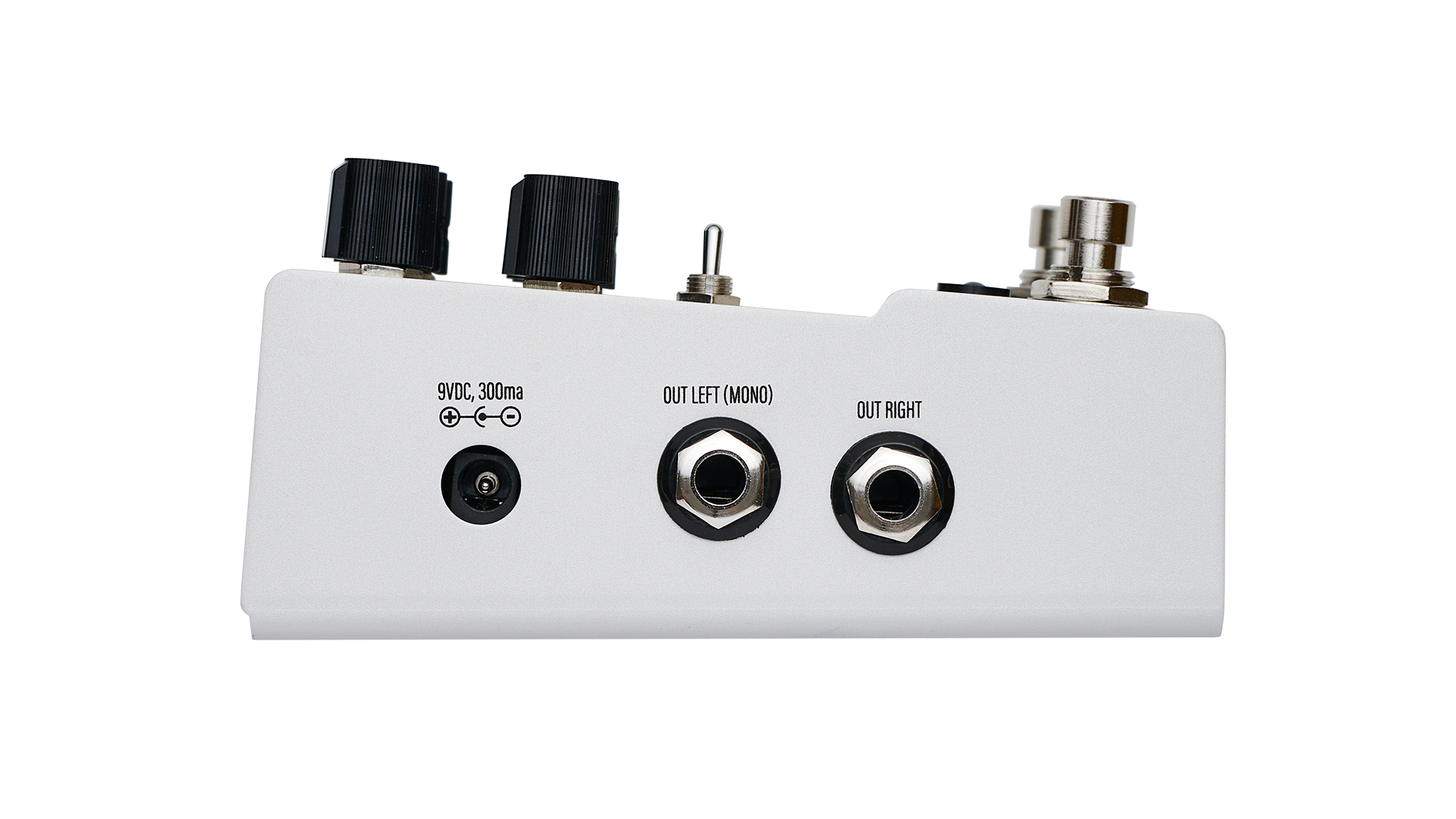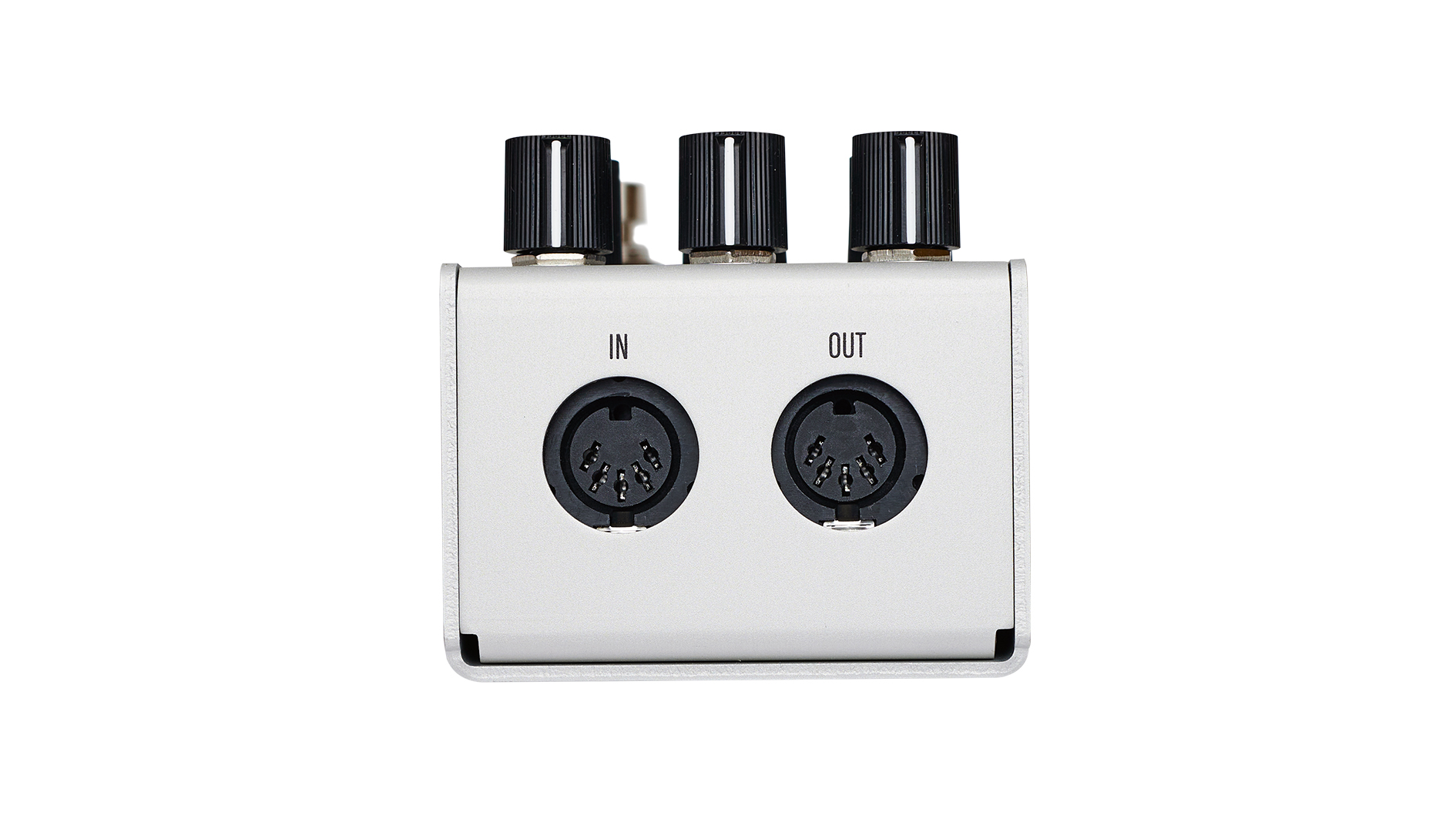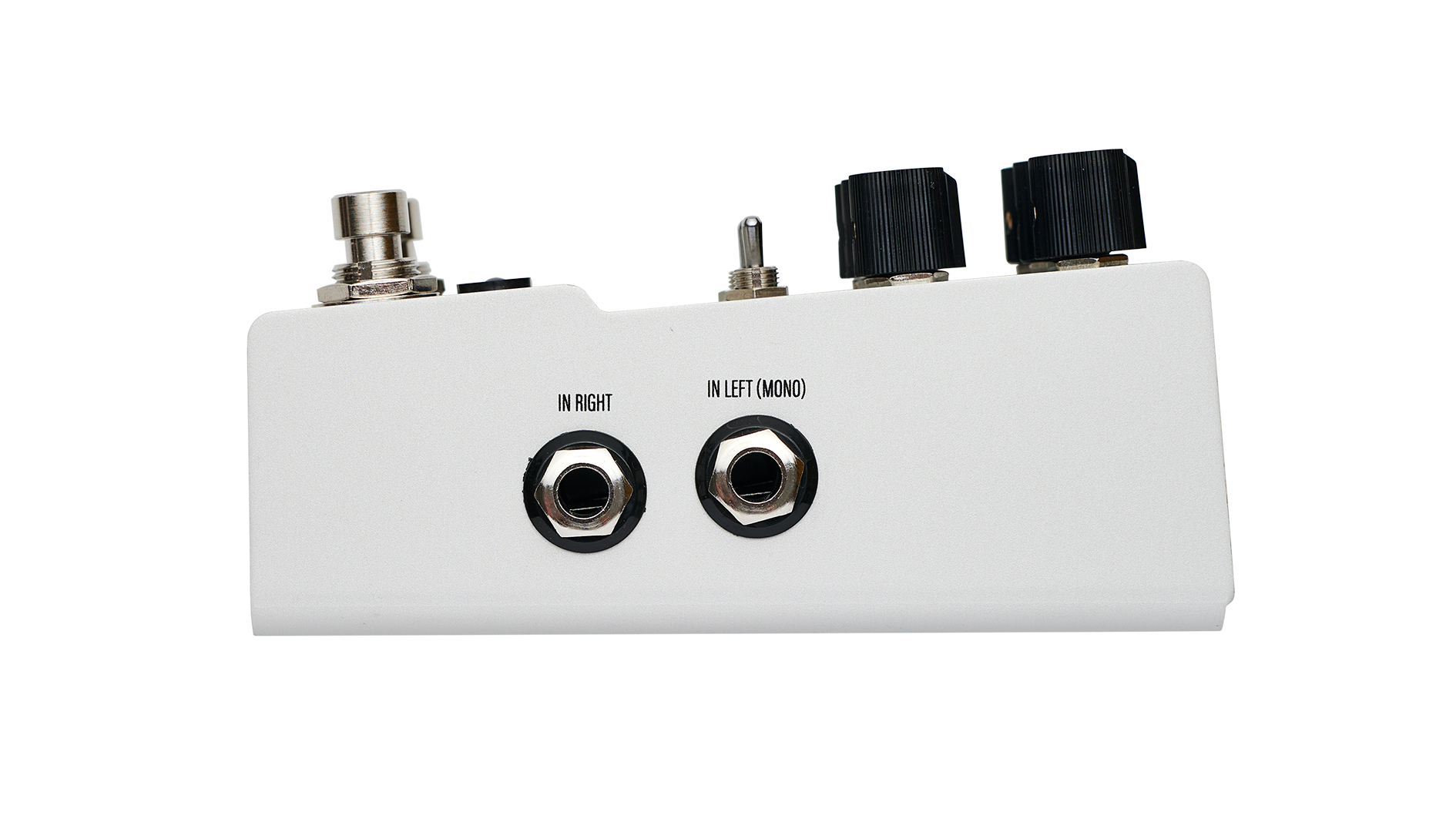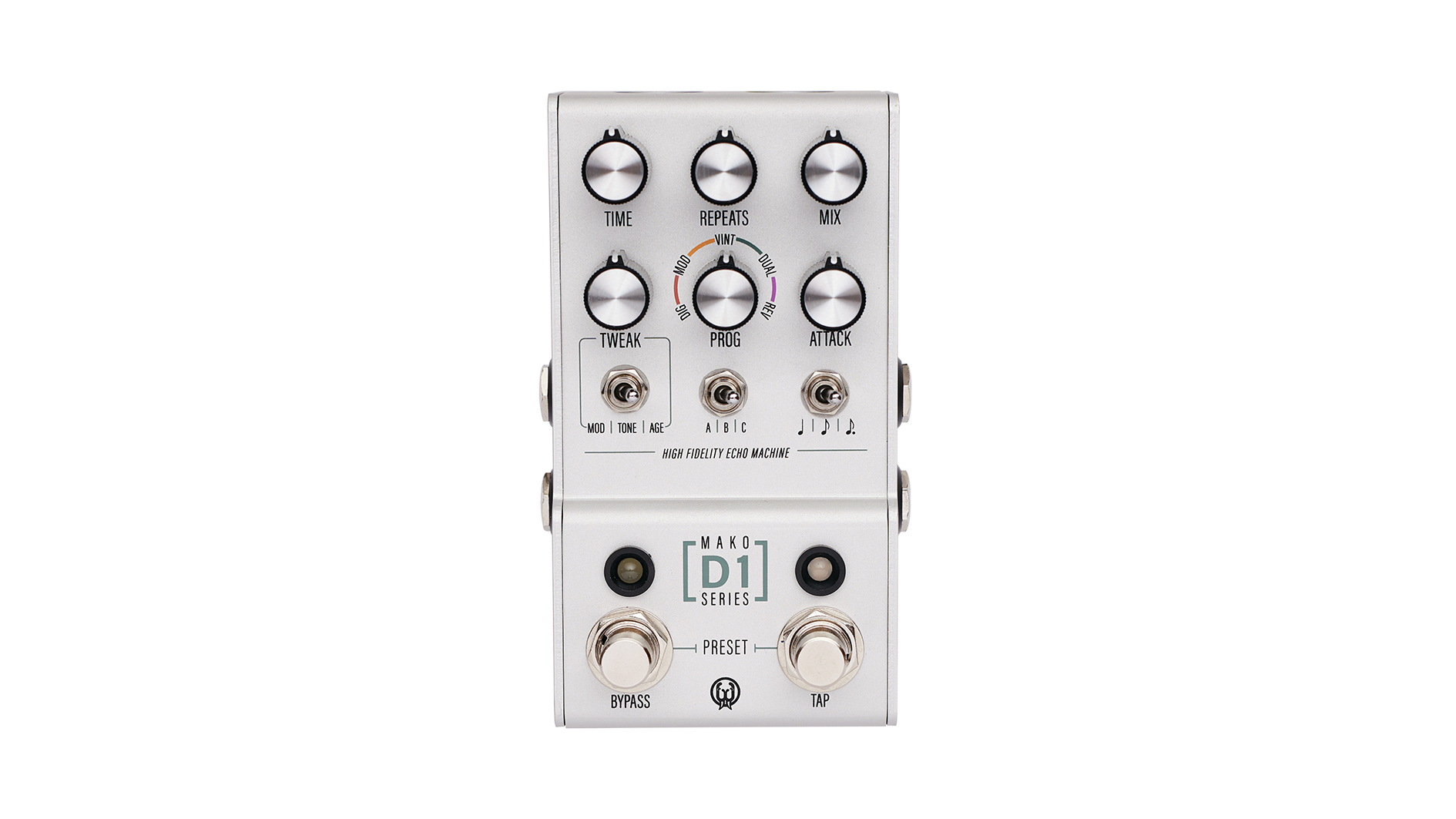Guitar World Verdict
A practical pedalboard delay with recallable presets, tap tempo and all the parameters on the surface, this pedal will slot easily into live gigs. However, it’s the massive scope for tailoring the nature of the repeats, in particular the inspired Attack control, that makes this a really flexible tone machine.
Pros
- +
Onboard presets.
- +
Practical set of delay types.
- +
MIDI capability.
- +
Attack knob.
Cons
- -
External control is MIDI only - there’s no provision for extra footswitches or expression pedal.
You can trust Guitar World
In a somewhat radical departure from its usual graphic-bedecked pedals, Walrus Audio has launched its rather more staid-looking Mako series, and the first in the new range is the D1 High Fidelity Stereo Delay, or ‘Echo Machine’ as the label reads on the pedal itself.
The D1 is a multi-function delay with five different programs or delay types, each of which has three instantly accessible adjustable parameters, and features a dedicated tap tempo footswitch that’s linked to three timing divisions for instant delay time setting.
Various mono and stereo in/out options are possible, and while the pedal has nine onboard preset slots available you can actually access a full 128 slots if you use MIDI, which can also offer full control over all parameters.
Sound

About the size of a Boss compact pedal but sporting two footswitches, the D1 offers a practical pedalboard-friendly alternative to larger multi-delay pedals and is also straightforward to operate with nothing hidden away in menus.
The delay types (Digital, Mod, Vintage, Dual and Reverse) are selected via a rotary Program knob and you get the standard Time, Repeats and Mix knobs to set up the basics, although the tap tempo is there as an alternative to the Time knob.
Furthermore, there are three tailored parameters for each delay type via the Tweak knob. The Mod parameter adds pitch modulation to the repeats, while Tone adjustments are generally in the form of a low-pass filter applied to the repeats to tone down the top-end, although with the Vintage delay you get a low-pass filter below 12 o’clock on the knob and a high-pass filter above.
The third Tweak parameter, Age, offers overdrive and high-frequency roll-off for all of the programs except Digital where it applies bitcrushing to the repeats.
The final front-panel knob, Attack, is a brilliant feature: it basically softens the attack of the repeats by applying a volume envelope to the audio that’s fed into the delay line. It’s great for keeping the repeats separate from the dry signal and delivering more diffuse echoes as you turn the knob.

If you like your repeats clear and clean, the Digital program is as straight as it comes, but that also makes it a good starting point for creating something a little less pristine. You can take the sharp edge off with the Attack knob, lose some brightness with the Tone tweak, and maybe add a touch of modulation. For more off-the-wall repeats, its bitcrusher can get brutal and angular.
The Mod delay’s premise is repeats with random and unpredictable pitch modulation. The result can be interestingly swimmy but can go fully seasick if you want to get more radical.
Vintage incorporates complex filtering of the repeats to deliver analog-style delay sounds in many flavors, while the Tone parameter offers darker-sounding repeats or something much thinner, shorn of low-end.
Asymmetric modulation offers a flavor of tape wobble, while the pedal’s universal function of momentarily holding down the bypass footswitch to ramp up the repeats can deliver vintage dub stylings.
Stereo rigs can take advantage of the Dual program’s two delays in parallel with different time divisions sent to separate outputs, but in a standard mono chain the summed repeats offer cool rhythmic multi-taps. Reverse can offer a nice otherworldly touch, especially when combined with a high Attack knob setting.
While it’s straightforward enough to set up the sounds, changing a delay type manually along with its three Tweak parameters is not something you’d really want to be doing on stage, which is where the nine onboard memories - plenty to get you through a gig - come in useful.
Stored in three banks of three, you select the bank with the toggle switch and can then scroll through and load them by pressing both footswitches simultaneously, easily done as they are fairly close together. The tap tempo LED will light red, green or blue to indicate which preset is loaded.
Usefully, you can choose whether to store delay time within a preset or not. In the pedal’s Global mode the tempo stays the same as you change presets, but in Preset mode the tempo changes to that set when the preset was stored.
Features

1. Tweak knob & switch - Here you’ll find the three adjustable parameters for each program. Select Modulation, Tone or Age with the switch and adjust with the knob.
2. Bank switch - There are three banks of three presets onboard: you select the bank (A, B or C) with this switch and press down both footswitches together to access the three presets (LED color indicates which).
3. Tap tempo switch - This footswitch is allied to the Division selector switch above it, which can select quarter (1/4), eighth (1/8), or dotted eighth (1/8) notes. The Division switch also selects the combination of repeats in Dual delay mode (1/4 note with 1/4 triplets, 1/8 note with 1/4 triplet repeats, 1/4 note and 1/8 note).
4. Attack knob - Turn this knob clockwise to adjust the volume envelope of the signal being fed into the delay. Higher settings means longer fade-ins, which result in softer-sounding repeats.
5. Prog knob - Turn this control so the pointer points at the legend to select which of the five programs you want to use.
Specs

- ORIGIN: USA
- TYPE: Delay pedal
- FEATURES: 3 selectable bypass types (True bypass, DSP+True bypass (trails) and DSP bypass), 9 onboard presets, tap tempo, MIDI, 60ms to 2s delay time
- CONTROLS: Program selector, Time, Repeats, Mix, Tweak, Attack, Tweak switch (Mod/Tone/Age), Bank switch (A/B/C), Division switch (quarter/eighth/dotted eighth), Tap footswitch, Bypass footswitch
- EFFECTS PROGRAMS: Digital, Mod, Vintage, Dual, Reverse
- CONNECTIONS: Standard inputs (Left/Mono, Right), standard outputs (Left/Mono, Right), MIDI IN, MIDI OUT
- POWER: Supplied 9V DC adaptor (not supplied) 300mA
- DIMENSIONS: 73 x 125 x 60mm (w x d x h)
Trevor Curwen has played guitar for several decades – he's also mimed it on the UK's Top of the Pops. Much of his working life, though, has been spent behind the mixing desk, during which time he has built up a solid collection of the guitars, amps and pedals needed to cover just about any studio session. He writes pedal reviews for Guitarist and has contributed to Total Guitar, MusicRadar and Future Music among others.
“The original Jordan Boss Tone was probably used by four out of five garage bands in the late ’60s”: Unpacking the gnarly magic of the Jordan Boss Tone – an actual guitar plug-in that delivers Dan Auerbach-approved fuzz
“This is a powerhouse of a stompbox that manages to keep things simple while offering endless inspiration”: Strymon EC-1 Single Head dTape Echo pedal review












